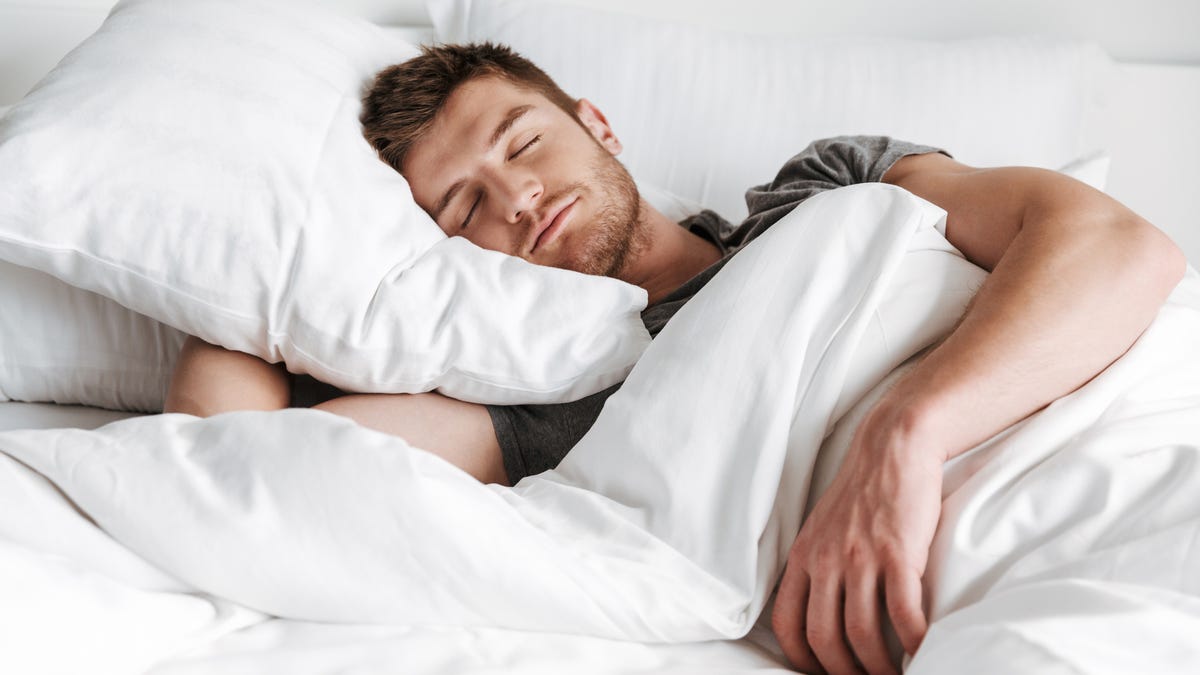 Why You Can Trust CNET
Why You Can Trust CNET Bad Napper? Here's the Trick to Falling Asleep During the Day
Easy ways to make your bedroom the perfect environment for sleep and naps.

Taking a snooze during the day can be difficult if your environment is too bright.
You turn down the lights, slip into your coziest pajamas and crawl under the covers as you tuck yourself into bed. There's just one problem. It's the middle of the day, and the blazing sun is shining through your window, making the midday snooze you were hoping for much more challenging. Light plays an important role in our sleep-wake cycle, so it's no surprise some people struggle to nap in the middle of the day.
The darkness triggers your body's natural production of melatonin and signals that it's time to wind down, while light indicates to your body that it's time to be awake and alert. That said, you don't need to seek out a local cave or underground tunnel to achieve the perfect dark, sleep-conducive environment.
Below, explore the different ways you can promote sleepiness in the daytime and make your bedroom into the ideal haven for a cozy nap. For more help on getting better sleep, here are 27 tips to help you sleep better and how to create the perfect sleep environment.
1. Get blackout curtains
Blackout curtains are extra thick with a tight weave, designed to block sunlight and ambient light from illuminating your room. They also help keep your room cooler by reflecting heat from the sunlight. And they don't have to be expensive. You can purchase a pair of curtain panels from Amazon for less than $20 each.
2. Utilize a sleep mask
A good sleep mask will cover your eyes and significantly reduce the amount of light you receive. It simulates a dark environment, allowing your body to properly recognize that it's time for sleep and wind down.
Studies have shown that wearing a sleep mask while you sleep can also improve memory, alertness and reaction time the following day.
A sleep mask blocks out ambient light, giving you better sleep and more alertness in the morning.
3. Turn down your temperature
In accordance with keeping your room dark enough to nap, it should also be at a relatively neutral temperature – the ideal temperature for sleep is between 60 and 67 degrees Fahrenheit. Our body temperature naturally drops during sleep. A room that's too hot or too cold can prevent your body from achieving that optimal temperature, making it more difficult to get proper rest.
4. Meditate before your nap
Meditation, like mindfulness and deep, rhythmic breathing, has a long list of benefits. Among them, it can help reduce stress, depression and anxiety, as well as lower your blood pressure. Meditation helps to relieve many of the disturbances that prevent us from falling asleep.
Before your nap, listen to a guided meditation from one of many helpful meditation apps. It'll help destimulate, unwind and promote relaxation so you're in the right mindset for a quick midday snooze.
5. Put your phone on 'do not disturb'
Your day isn't quite over, making it very likely that people will try to reach out to you during your nap (or while you're trying to doze off). When your phone keeps buzzing from different notifications like texts, emails and calls, your mind stays on alert. As you can imagine, this is counterproductive when you're trying to destimulate and relax your mind for sleep. Keep distractions from your devices at bay by closing your laptop and putting your phone in do not disturb, focus or shhh mode.

